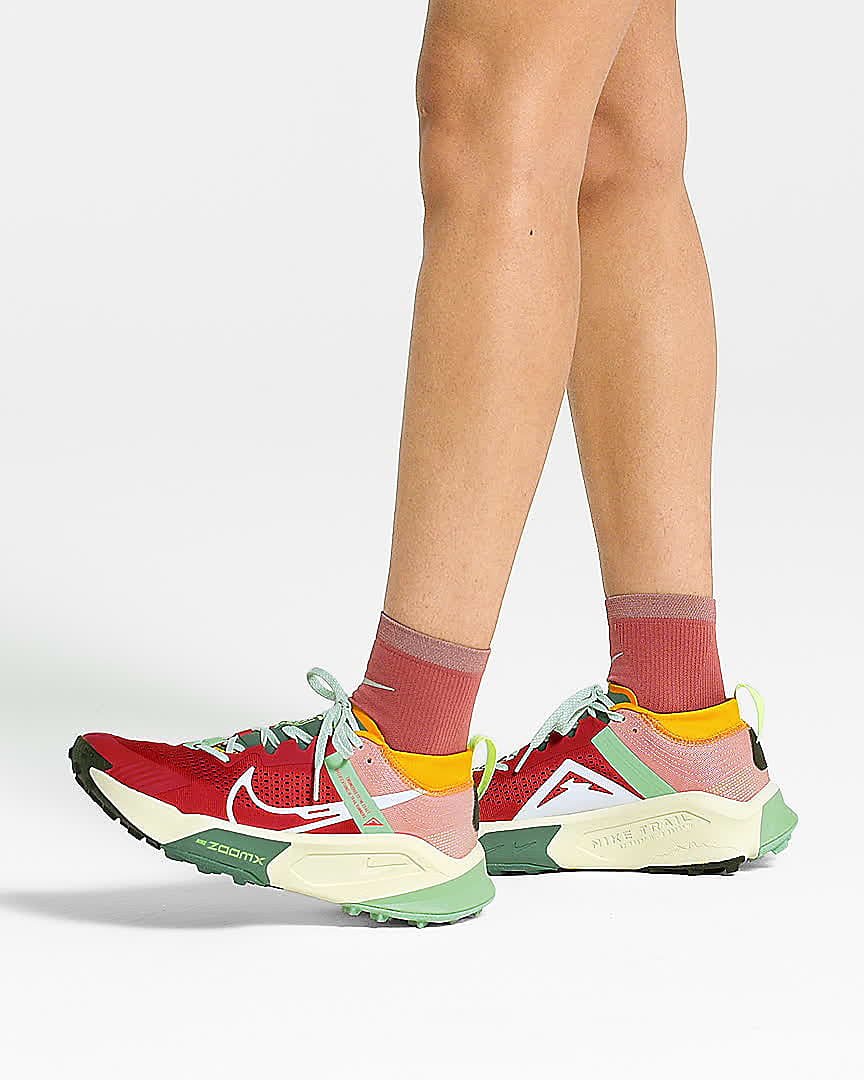If you’re someone who loves spending time outdoors, whether it’s for leisurely strolls or adventurous hikes, having the right footwear is crucial.
When it comes to choosing between trail running shoes and walking shoes, it can be challenging to determine which one is best suited for your needs.
This dilemma becomes even more complicated for women who are searching for the perfect pair of trail tennis shoes women’s.
In this blog post, we’ll take a closer look at the differences between trail running shoes and walking shoes, and help you decide which one is right for you.
Characteristics of Trail Running Shoes
Trail running shoes are designed for speed, agility, and quick movement. They are lighter than walking shoes and provide just enough cushioning to absorb the impact of running on uneven terrain.
Trail running shoes are also made from breathable materials to keep your feet cool and comfortable.
Minimal Grip for Speed and Agility
Trail running shoes offer minimal grip compared to hiking boots, which means they allow you to move quickly and easily across different surfaces.
They are designed to provide a smooth and effortless stride, which is perfect for runners who want to maximize their speed and agility on the trails.
Cushioning for Impact Absorption
Trail running shoes also have cushioning to absorb the impact of running on uneven terrain. This feature is crucial for runners who want to reduce the stress on their joints and muscles.
Trail running shoes typically have a soft and flexible midsole that provides cushioning without compromising on speed or agility.
Characteristics of Walking Shoes
Walking shoes are designed for stability, support, and comfort. They are heavier than trail running shoes and offer more grip for traction on various surfaces.
Walking shoes also have supportive features such as arch support and padding, which makes them perfect for people who walk for long periods.
Heavier Design for Stability and Support
The heavier design makes walking shoes more stable and supportive. They are designed to provide a sturdy base for your feet, which is important when you walk on uneven terrain or rocky surfaces.
The heavier design also helps to distribute your weight evenly, which reduces the risk of injuries.
More Grip for Traction on Various Surfaces
Walking shoes have more grip than trail running shoes, which means they provide better traction on various surfaces.
This feature is especially useful when walking on wet or slippery surfaces, such as rocks or gravel. Walking shoes typically have thicker and more durable soles that provide better grip and support.
Choosing Between Trail Running Shoes and Walking Shoes
When trying to decide between trail running shoes and walking shoes, there are a few things to keep in mind.

Terrain
The terrain you’ll be walking or running on is the first thing to consider. Trail running shoes are designed to give you good traction and stability on uneven surfaces.
Walking shoes, on the other hand, have a wider and thicker soles to provide a stable base for every step you take.
Durability
Durability is another important factor. Hiking shoes are usually made with tougher materials like leather or durable nylon fabrics, while trail running shoes tend to be made with lightweight mesh or thin nylon.
Hiking shoes are better suited to heavy loads and rough terrain, while trail runners may not hold up as well.
Comfort
Comfort is also crucial. While trail running shoes may feel more comfortable when worn frequently, walking shoes distribute weight more evenly and have more beveled heels to prevent tendinitis or shin splints.
Final Verdict – Hiking Boots vs. Trail Runners
If you’re deciding between hiking boots and trail runners for hiking, REI Co-op recommends considering foot and ankle protection as well as durability. Hiking boots provide both but require a break-in period before use. Trail runners offer little to no break-in period but don’t offer as much protection.
Ultimately, the best way to decide between trail running shoes and walking shoes is to try both options out on different terrains and over varying distances, weights, and weather conditions!

Leave a Reply